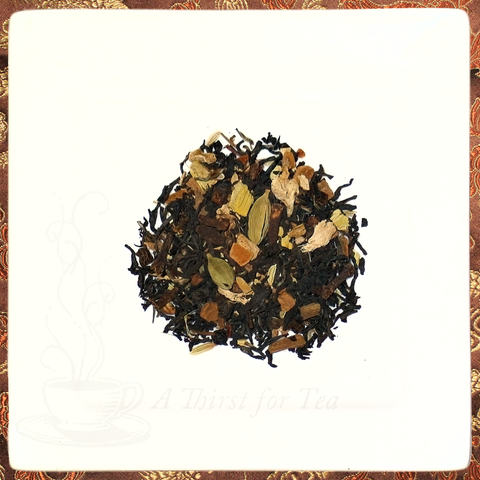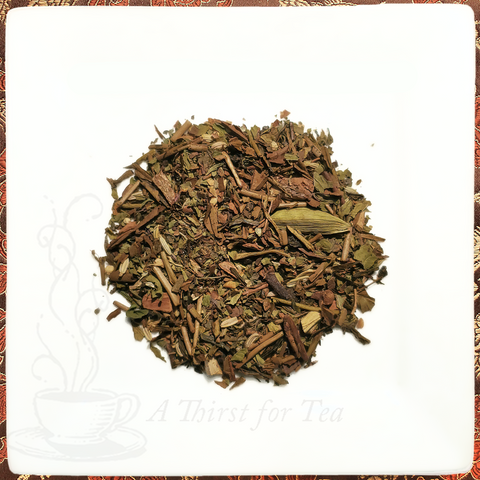Many of the spices used in masala chai are known to have health promoting and disease prevention properties in both traditional Chinese medicine and Ayurveda. Among them are cardamom, ginger and licorice root.
Cardamom is a warm spice that originated in India. In Ayurveda it is used to improve digestion and is helpful in controlling flatulence and gas. Cardamom is known to improve blood circulation to the lungs and, in small quantities, can be used in the treatment of asthma and bronchitis. Cardamom is a potent antioxidant and is a good source of minerals.
Ginger root is the most widely used and most available herbal remedy in the world. It is used to lower cholesterol, and for relief of nausea, colds, arthritis, allergies and asthma. It is also known to protect the digestive tract and liver against parasites and toxins.
Licorice Root is also one of the most widely used medicinal herb in the world today and it is the single most used herb in Chinese medicine. Today it is primarily used to treat coughs and colds and historically it has been used alleviate thirst and hunger and to improve stamina.
Cloves have antiseptic and germicidal properties that help fight infections, relieve digestive problems and arthritis pain. They also happen to have the highest antioxidant activity of any food. They also boost memory and blood circulation, and are beneficial for the heart, liver and stomach.
In many parts of India there is a saying that loosely translated as: "spiced chai…the tea that eats like a meal" - and in certain parts of India it's true. Traditional Indian chai is a heady mix of spice and tea. Chai recipes are handed down from generation to generation the way westerners pass on grandma's apple pie recipe. The tea is traditionally brewed by boiling milk, adding good thick black tea, various spices and then boiling it again. The resulting mixture is thick, spicy and incredibly full-bodied. If your spoon stands up in the cup, it's ready!
Ok, that might be a little over the top, but it's no exaggeration to say that drinking great chai is almost a religious experience. As the brew reaches all the corners of your body it fills you with a warm glow that you will want to experience again and again. Luckily, if you're in India, spicy fresh chai is available just about everywhere. Chai-sellers, known as Chai Wallahs sell their concoctions at roadside stalls, train stations, anywhere you can think of. The tea is served in small clay cups known as chullarhs that are smashed on the ground once the tea is finished.







